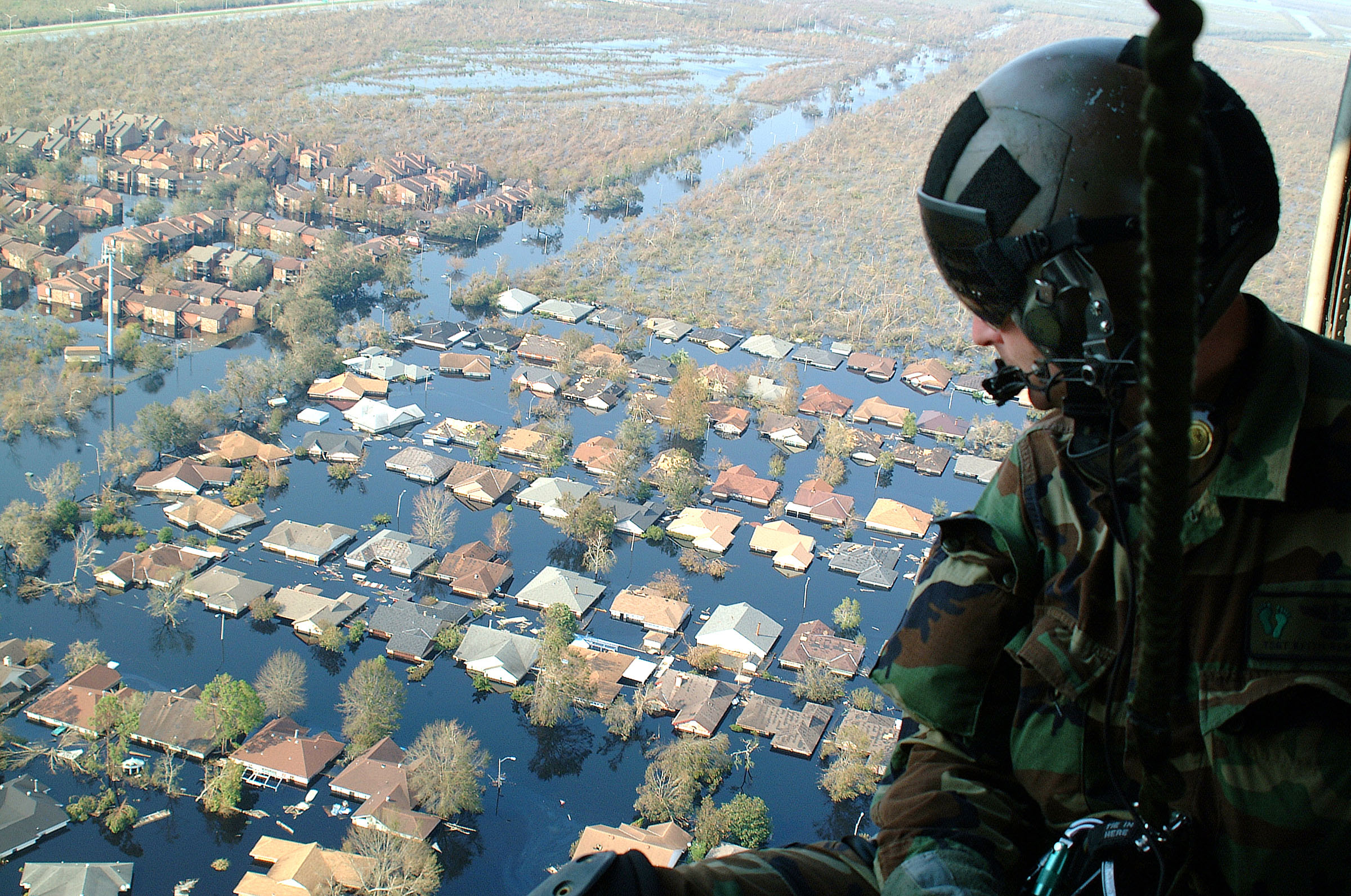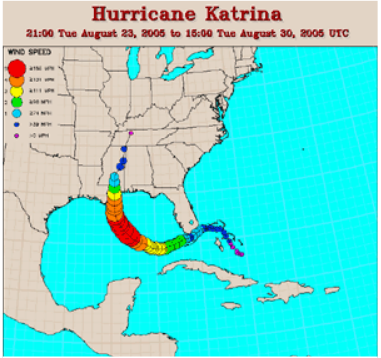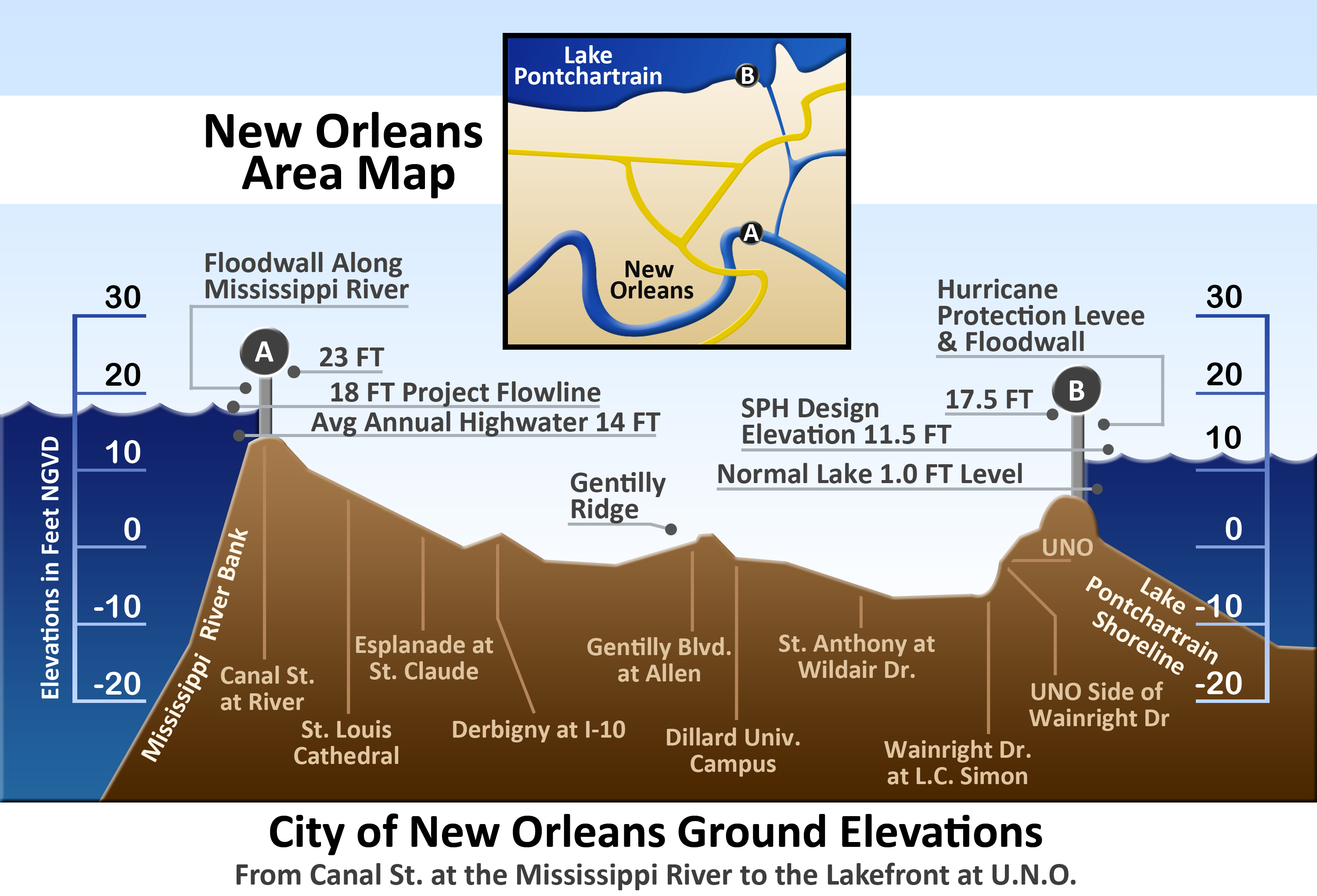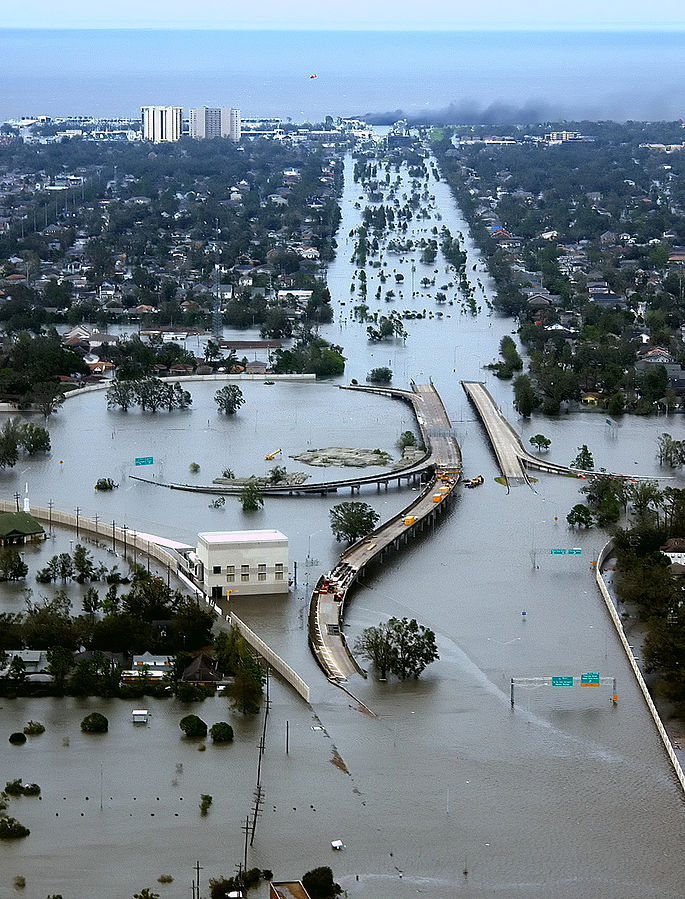10 Things You Might Not Know About Hurricane Katrina

By:
As we look back on ten years since Hurricane Katrina, here are ten facts you might not know about the storm that ravaged New Orleans and the U.S. Gulf Coast.
1. 1,833 people were killed by Hurricane Katrina. It was the third deadliest hurricane in American history.
Katrina was deadly not only in the state of Louisiana, where 1,577 people died. It also killed 238 people in Mississippi and 14 in Florida, where the storm first made landfall on August 25, 2005.
2. During Katrina, the barometric pressure was the third lowest ever recorded during a hurricane in the U.S. This makes the storm the third strongest hurricane in recorded U.S. history.

As measured by barometric pressure, Katrina is the third strongest hurricane in U.S. recorded history. (Recorded history dates back to 1851.) Barometric pressure measures air pressure, and low pressure is more likely to indicate rain. In the case of Katrina, the barometric pressure at landfall was the third lowest ever recorded during a U.S. hurricane. Sustained winds were 125 MPH, which has only been exceeded in a handful of other storms in the U.S.
3. Hurricane Katrina made landfall first in Florida, downgraded to a tropical storm, but then picked up strength once it got into the Gulf of Mexico.
Just look at the path of Hurricane Katrina, and you'll see how strong it was:
 NOAA - noaa.gov
NOAA - noaa.gov
The hurricane made landfall in South Florida on August 25 after forming as a storm in the Bahamas two days earlier. But because it was over land for a short period of time—only crossing over the tip of Florida—it did not severely weaken after landfall. It dipped into a tropical storm briefly, but regained hurricane strength over the Gulf of Mexico. It reached Category 4 and Category 5 hurricane status over the Gulf. When it made landfall in Louisiana on August 29, it had just dropped to a Category 3 storm. (The U.S. has seen two Category 5 hurricanes make landfall since 1950.)
4. The levees in New Orleans failed to protect the city not only because the storm was so big, but also because the levees were not very good.
 Alexid / Wikimedia Commons - wikimedia.org
Alexid / Wikimedia Commons - wikimedia.org
New Orleans is protected by levees that hold back flooding in the case of a storm. As National Geographic pointed out, New Orleans, which sits an average of six feet below sea water, is a unique place. It's wholly surrounded by water, in between Lake Pontchartrain, the Mississippi River, and the Gulf of Mexico. The result is that New Orleans is basically a bowl, protected by walls meant to keep out the water. Initially, Katrina's effects were attributed to the levees not being built for that kind of storm.
As the Washington Post reported in 2012, though, Katrina was not a $200 billion dollar disaster only because the storm was too big for the protections in place. Instead, the city saw "key levees, including the 17th Street and London Avenue canals in the heart of the city, fail[ ] with water well below levels they were designed to withstand," Jed Horne wrote in the Washington Post. It wasn't that the levees were not strong enough; it was that they just weren't very good. "As the Army Corps eventually conceded, [the levees] were breached because of flawed engineering and collapsed because they were junk," Horne wrote further. "Sheet piling — metal planks driven into the ground to reinforce levees and flood walls — didn’t run deep enough. Corps geologists botched tests that should have determined soil stability below the levees."
5. 40 percent of the deaths in Louisiana were caused by drowning.
 U.S. Coast Guard / Wikimedia Commons - wikipedia.org
U.S. Coast Guard / Wikimedia Commons - wikipedia.org
After the levees failed, 80 percent of New Orleans was under water, and more than 100,000 homes were lost. Many people could not evacuate after the storm and were stranded in the flooding. That's why 40 percent of the deaths in Louisiana were due to drowning. Two-thirds died as a result of flooding—either due to drowning or other effects, such as collapsed buildings.
6. Nearly half of the people who died in Louisiana were aged 74 and older.
The elderly made up almost half of the people who died in New Orleans due to Katrina. A 2009 study found that most of the deaths occurred near failed levees near the 9th Ward and Lakeview. Many people may have chose not to evacuate due to the cost and frequency of evacuations in the years leading up to Katrina.
7. The historic French Quarter of New Orleans mostly stayed dry.
Because it is slightly elevated compared to the rest of the city, the historic French Quarter, which sits along the Mississippi River, mostly stayed dry, although about nine percent of the area probably had very low levels of flooding. "Some have pointed out that the higher terrain of these riverside areas explains why [Jean-Baptiste Le Moyne de] Bienville, the city's founder, established New Orleans here in 1718," wrote Richard Campanella of NOLA.com.
8. It was the biggest evacuation in U.S. history. 1.3 million people evacuated southeast Louisiana, about 400,000 from New Orleans.
Most of the more than 1 million people to evacuate came back home shortly after the storm. But 600,000 households in the region had not returned one month after the storm.
About 11 months after the storm, the population of New Orleans had lost 254,502 people, dropping to 230,172 from 488,674 in 2000. In 2014, the population was back to about 384,000, according to the U.S. Census Bureau.
9. $14.5 billion has been spent to upgrade infrastructure to protect New Orleans since Katrina.
The new system to protect New Orleans cost $14.5 billion, and it is a big improvement. It should be able to keep New Orleans pretty dry in the case of a storm surge that's even worse than Katrina."[M]ost property inside the levees would remain dry or see minor flooding, even if half the interior pumping stations failed. Most remaining floodwaters within the levee system would reach less than 2 feet deep," NOLA.com reported. "By contrast, vast areas of New Orleans and St. Bernard Parish were submerged under 8 feet of water or more after Katrina."
That said, the loss of coastal wetlands, which can absorb rising seas, has put the city at risk. The state estimates it would cost $50 billion to restore those areas.
10. The effects of Katrina were felt as far north as Quebec, Canada.
As Katrina dissipated after landfall, the storm, no longer a hurricane, continued north. There were storms in the Ohio Valley, and flooding was so bad as far north as Quebec that some towns were totally isolated due to flooded roads.
